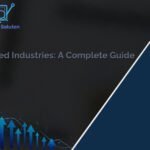SaaS SEO RankStar: In the fast-evolving landscape of SaaS (Software as a Service), visibility on search engines is no longer optional; it’s essential. The competition is fierce, algorithms are smarter, and user expectations are higher than ever. If you’re running a SaaS company in 2025, a powerful SEO strategy is your gateway to more leads, better rankings, and sustainable growth. That’s where SaaS SEO RankStar comes into play: your strategic blueprint to dominate search engine results and attract high-converting traffic.
With What Is SaaS SEO RankStar?
SaaS SEO RankStar is not a tool, but a way of thinking and mindset change. By combining the latest in innovated SEO strategies with marketing strategies unique to SaaS, we’ve built an impactful strategy around three core objectives:
- Boosting organic visibility
- Increasing qualified leads
- Enhancing user experience
RankStar isn’t just keywords and backlinks—it’s authority, trust, and relevance for your SaaS niche.
Why SaaS SEO Is Different in 2025
The SEO game for SaaS in 2025 is not the same as ecommerce, local SEO or content blogs. It’s drier, more strategic, more personalized. Here’s why:
- Long Sales Cycles: Many SaaS solutions require in-depth research and have different stakeholders.
- There’s a lot of customer value: Every conversion potentially being thousands of dollars in recurring revenue.
- Non-competitive Niches: Except for maybe a couple (though 1-2 tech bro(s) disagree), they’re all crowded with funded startups and incumbents, from CRM to DevOps tools.
- Well- Informed Buyers: SaaS consumers are well-educated, they want value, validation, and value before they buy.
So, the need of the hour for a RankStar plan is a blend of SEO accuracy and strategic storytelling, to convert footfalls to users.
Pillar 1: Deep SaaS Keyword Intelligence
Traditional keyword research is just not cutting it. Both buyer-intent keyword mapping and RankStar are the bottom two parts of:
- Top-of-Funnel (TOFU): Queries that are more informational, such as “best CRMs for startups” or “how to automate invoices.”
- MOFU (middle-of-funnel): Comparison and solution-based keywords such as “HubSpot vs. Zoho” or “invoice software with Stripe integration.”
- Bottom-of-Funnel (BOFU): High-intent keywords such as “buy CRM software” or “enterprise email marketing tool pricing.”
Leverage AI-driven SEO tools (think Surfer SEO, Ahrefs, SEMrush, and Frase) that do proper keyword research and help you to focus not only on volume, but intent, gap analysis, and SERP features (like featured snippets and video carousels).
Pro Tip: Create a keyword universe (not a list) and map each of those keywords to a piece of content, landing page, or lead magnet.
Pillar 2: Content That Educates, Converts, and Ranks
By 2025, helpful content won’t cut it, content will need to be purpose-driven and algorithm-friendly.
RankStar Content Blueprint:
- Authority Blog Posts: 2,000+ words, internal linking, unique data, visuals, & expert opinions.
- SEO-Optimized Feature Pages: Focused on the main features of their SaaS, optimized around product keywords.
- Comparison Pages: “Your SaaS vs. Competitor” pages are SEO gold – don’t overlook them.
- Use Cases & Industries:Develop custom content for verticals such as healthcare, finance, or education.
- Demos and Videos: Embed interactive explainer videos, walkthroughs, or product demos in your content.
Consistency beats virality. Publish with frequency and refresh content on a quarterly basis for up-to-date information — a major ranking factor in 2025.
Pillar 3: On-Page SEO with UX at the Core
Google now measures experience signals like time on page, interaction depth, and bounce rate more than ever.
Here’s how RankStar optimizes on-page:
- Title Tags & Meta Descriptions: Clear, clickable, keyword-rich—but avoid clickbait.
- Header Hierarchies: Use H1–H4 strategically for scannability and SEO context.
- Page Speed & Mobile UX: Core Web Vitals are now table stakes.
- Internal Linking: Create SEO clusters with cornerstone content linking out to child pages.
- Smart CTAs: Lead magnets, demos, and trial offers integrated throughout content—not just at the bottom.
Every page should answer a question, solve a pain point, and guide the user toward a decision.
Pillar 4: Backlink Authority—Earn It, Don’t Beg for It
In 2025, backlinks will still rank highly on Google. But the quality and context of those links matter more than raw numbers.
RankStar Link Building Framework:
- Guest Posting 2.0: Write deep, data-backed posts for SaaS-specific publications.
- Digital PR Campaigns: Use product milestones, research reports, or funding news to get press.
- Partner Roundups: Feature partners and integrations in your blog—encourage reciprocal linking.
- Founder Interviews & Podcasts: Leverage your founders as thought leaders to earn backlinks organically.
- Free Tools or Templates: Build micro-tools or calculators and let others link back as a resource.
Warning: Avoid shady link farms and irrelevant backlinks—they can do more harm than good in today’s algorithm.
Pillar 5: Technical SEO That Doesn’t Break Your Dev Team
Most SaaS sites are built with custom stacks or CMS like Webflow, React, or WordPress. Technical SEO needs to be team-based rather than isolated.
Here’s your RankStar tech SEO checklist:
- Schema Markup: Product, review, FAQ, and breadcrumb schema.
- Crawl Budget Optimization: Make good use of canonical tags and robots.txt.
- Sitemap Health: Make sure it’s updated, clean, and submitted in Google Search Console.
- Error-Free URLs: Watch for 404s, redirect loops, and inconsistent slugs.
- JavaScript SEO: Ensure bots can crawl content rendered via JS frameworks.
Collaborate with your developers—don’t just throw audits at them. Build SEO into your product roadmap.
Pillar 6: Conversion Rate Optimization (CRO) for SEO Pages
For now, traffic is only half the battle. The last pillar of the RankStar approach is the CRO, which in a nutshell is about transforming SEO visitors into either free trial users, leads, or paying customers.
Tactics include:
- A/B Test Your Headlines and CTAs
- Navigation with sticky part plus sign up form.
- Exit-Intent Popups
- Chat on Your High Traffic Pages
- Lead Capture Forms with Social Proof
Monitor conversion goals in GA4, Hotjar, or Mixpanel and make improvements on an ongoing basis.
SaaS SEO in 2025: Data-Driven, Human-Focused
AI is transforming search, but the fundamentals remain: solve problems, build trust, and stay consistent.
RankStar isn’t a one-time checklist—it’s a living, breathing strategy that aligns SEO with sales, product, and brand.
If you’re in SaaS and want more visibility, leads, and revenue in 2025, it’s time to activate your SaaS SEO RankStar strategy.
Final Thoughts
SEO for SaaS is not getting easier—it’s getting smarter. With RankStar, you’re not chasing trends; you’re setting them. Equip your team, audit your assets, and own your niche because in 2025, only the visible survive.







Leave a Reply